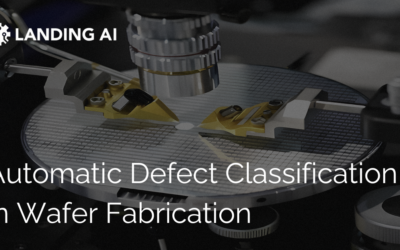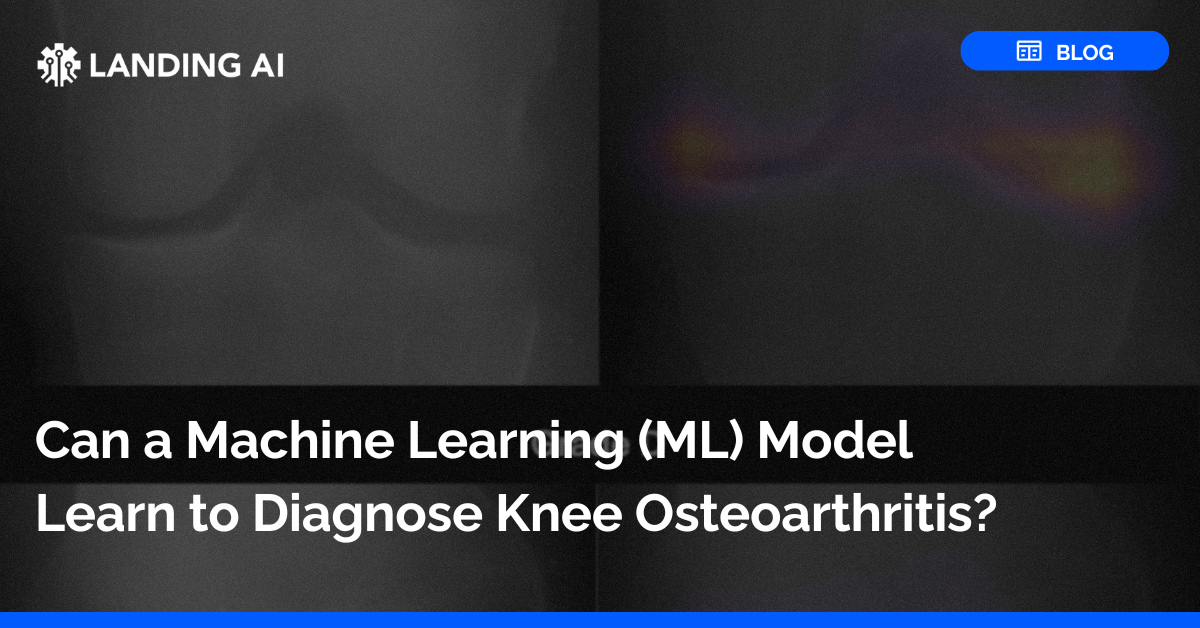- Dr. Facundo Segura, Orthopedic Surgeon in SEGURA, Centro Privado de Ortopedia y Traumatologia & Universidad Nacional de Córdoba. Córdoba, Argentina
- Francisco Cuenca-Acuna, Principal Engineer at Landing AI, Córdoba, Argentina
Knee osteoarthritis (OA) is a degenerative condition that gradually deteriorates the cartilage in the knee joint, causing pain, stiffness, and disability in patients. Knee OA affects almost 240 million individuals worldwide.
According to the World Health Organization (WHO), by 2050, around one-fifth of the global population will be 60 years old or older. Among this group, about 15% are expected to experience symptomatic knee OA, with a third of them facing significant disabilities.
Individuals affected often experience chronic pain, crepitus, swelling, morning stiffness, muscle atrophy, reduced quadriceps strength, and compromised postural control. These symptoms significantly hinder the ability to carry out routine daily activities.
Accurately predicting the advancement of knee osteoarthritis is pivotal in delivering tailored and timely treatment to patients. By precisely forecasting the severity of osteoarthritis, medical professionals can intervene promptly with therapies aimed at slowing down the disease’s progression and enhancing the overall quality of life for the patient.
Why is Machine Learning Important in Orthopedics?
The use of classification models in orthopedics is crucial because they provide a structured framework for understanding and communicating the severity of musculoskeletal conditions. These models allow us to categorize injuries or diseases into different levels of severity or stages of progression, facilitating clinical decision-making.
One key reason for using classification models in orthopedics is that they provide clear guidance for determining the most appropriate course of action. By classifying a condition at a specific level, we can anticipate its evolution, prognosis, and necessary interventions. This is crucial for establishing a personalized and optimized treatment plan for each patient.
However, it’s important to recognize that classification models have their limitations. Sometimes, they may oversimplify the complexity of a clinical condition, which can lead to erroneous decisions if other important factors are not considered. Additionally, classifications can vary in their accuracy and reliability, which can affect their clinical utility in certain situations.
Therefore, while machine learning in orthopedics is a valuable tool that guides us in diagnostic and therapeutic decision-making, it’s essential to complement them with a comprehensive and evidence-based approach. This involves considering the specific clinical context of each patient and using other assessment and diagnostic methods to obtain a complete and accurate picture of the situation. Ultimately, the key is to use classifications as a guide but always maintain flexibility and adaptability to provide the best possible care for our patients.
Determining Osteoarthritis Severity
Knee osteoarthritis can be diagnosed by looking at knee x-rays and determining the joint spacing. The International Knee Documentation Committee (IKDC) defines four severity levels of knee OA, which are shown on the image and table below
It is relatively simple for doctors to recognize extreme levels like the absence of joint space narrowing (level A) or very little joint space (level D), which would likely require a knee replacement surgery. Recognizing levels B and C are key to starting early treatment.


Training a Knee Osteoarthritis Classification Model
We used a public dataset with over 1900 medical images of patients with varying degrees of the disease to develop the predictive model for knee osteoarthritis. Medical experts labeled these images to train a classification model, allowing it to recognize patterns and characteristics associated with different levels of osteoarthritis.
Landing AI provides a computer vision cloud platform, LandingLens, that enables users to build, iterate, and deploy computer vision solutions. We trained a classification model in LandingLens with this dataset. Each knee OA severity level was mapped to a class. The resulting model was able to analyze new images of patients and predict the degree of osteoarthritis in their knees. This prediction was based on the evaluation of joint space, the presence of osteophytes (bone spurs), and other radiological signs of the disease.
Using the LandingLens classification model, we obtained precision and recall scores of 95.5%. This means that the model was able to classify 95.5% of the images and the predicted severity was correct 95.5% of the time.
Understanding the AI Model Results
Even though the precision and recall metrics obtained during training were high (i.e. 95.5%), it is important to understand why this is the case and what could be the impact of the 5% error rate.

Looking at the model’s confusion matrix we observe that high rates of correct predictions in classes C and D suggest that the model was able to effectively capture the distinctive characteristics of these classes. In these cases, with this degree of arthritis, we know that these patients will require surgery in the long term.
Moreover, in the case of grade B, the cases it classifies are one grade lower, grade A in this case. If we were to rely on the classification to determine our treatment, these would be patients who would continue with medical treatment if necessary.
At times, the model incorrectly predicted class C or D for the other. This could indicate that there may be areas of overlap in the visual features of these classes, making their distinction challenging for the model. This could be the result of inadequate representation of the classes in the training dataset, or the presence of intra-class variability that was not captured by the model.
In the following example we evaluate the model’s predictions by looking at the classification heatmap in LandingLens. These predictions verify that the model has learned to recognize similar attributes that a doctor would look for.

Conclusion
The prediction of knee osteoarthritis using artificial intelligence technologies represents a significant advance in predictive medicine. Classification models not only help doctors diagnose and treat the disease more effectively but also provide hope to patients by offering them the possibility of personalized treatment and a better quality of life.
LandingLens streamlines the analysis of medical images to predict diseases and health conditions. Leveraging advanced machine learning algorithms, LandingLens can identify patterns and characteristics in images that are challenging for the human eye to detect. With the use of LandingLens, doctors can easily upload knee x-rays of patients with osteoarthritis and obtain valuable information for diagnosis and treatment.
As artificial intelligence (AI) and tools for analyzing medical images improve, doctors will be able to predict and treat knee osteoarthritis more effectively. This means there could be new ways to manage this painful condition, offering relief and hope to people who have it.






